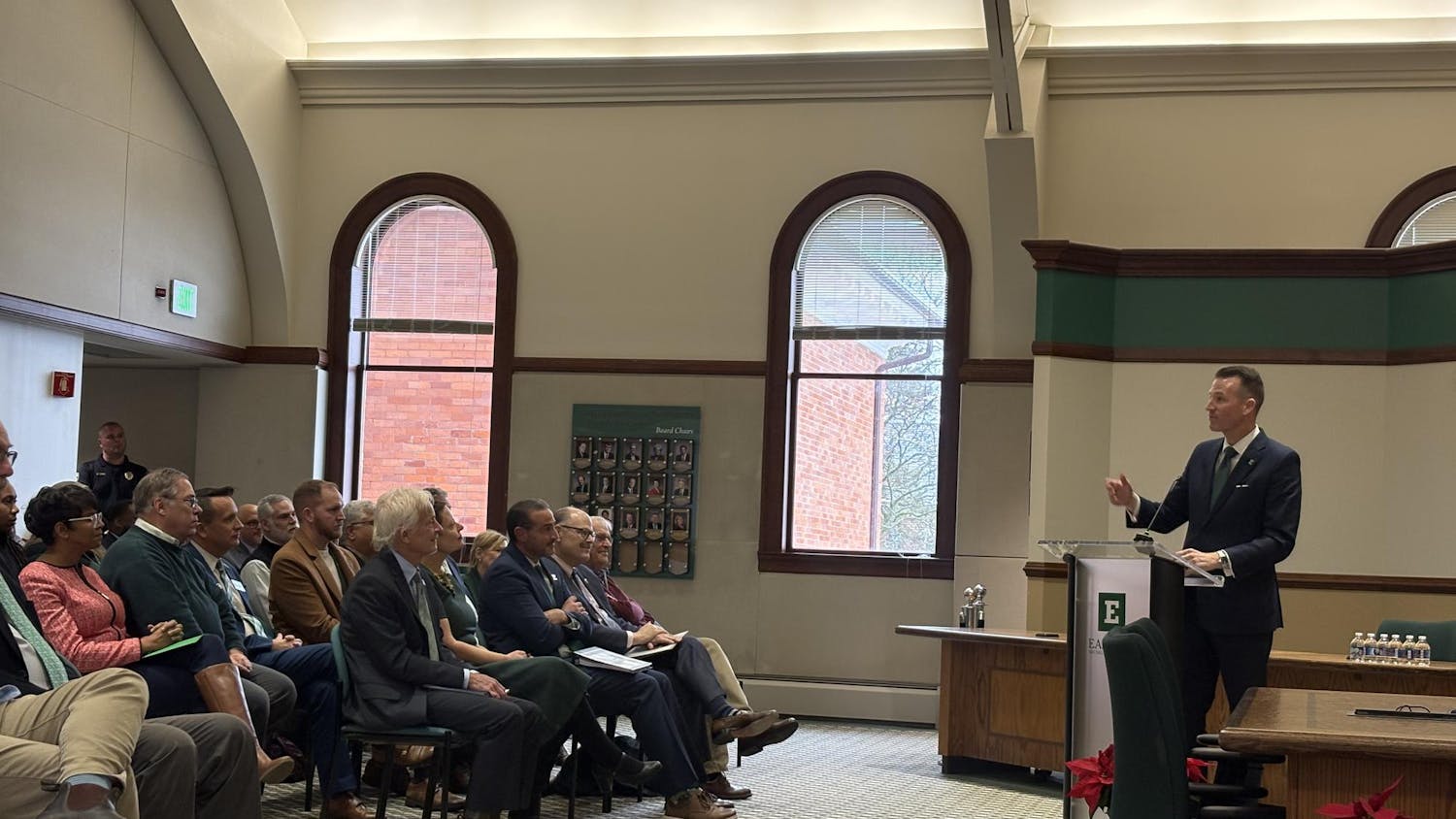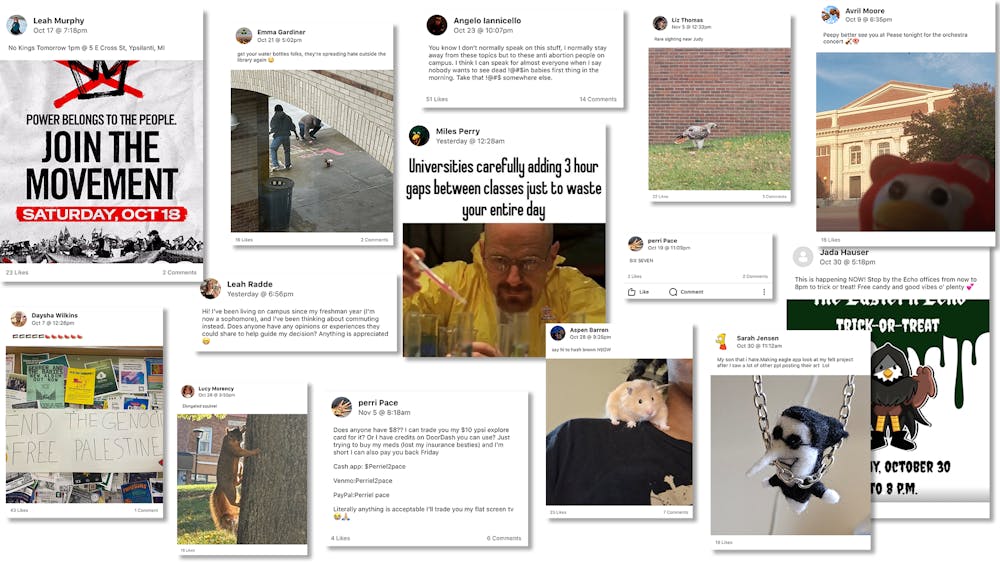When the moon passes between the sun and the Earth on Monday, April 8, it will completely block the daylight for a number of U.S. cities. Ypsilanti, home to Eastern Michigan University, isn't one of them. Ypsilanti, with about 99% of the sun blocked, will still see many of the unusual effects of an eclipse.
Although most of Southeast Michigan will experience a partial eclipse, the National Weather Service reported that parts of Erie and Bedford Township (including Luna Pier) in southeastern Monroe County will experience totality, or complete blockage of the sun's light between 3:12 and 3:13 p.m.
Some effects from the eclipse residents of Ypsilanti might experience are significant temperature changes and perhaps some of the brightest stars will become visible, as well as a glimpse of parts of the sun's corona, the sun's upper atmosphere viewed as a ring around the dark moon. It won't get too dark though, even at 99% coverage there will be significant light in the area.
Still, humans will be doing some things differently such as looking at the sun through specialized glasses designed to protect their eyes. Those glasses block out 99% of the light coming off the sun; light that is so strong it can permanently damage the retina in a human eye. Note: regular sunglasses won't work.
EMU students involved in eclipse study
A dozen Eastern students are traveling south to be in the path of the totality.
Eastern is one of 70 institutions participating in a nationwide, NASA-funded eclipse ballooning project during the event. The EMU team traveled to Ohio for the project and will release a helium balloon full of measuring equipment to gather data about what's happening in the atmosphere as the light changes. The public will be able to watch the release through a livestream hosted by the leaders of the project, a team at Montana State University.
“The high-altitude weather balloon launch is the culmination of a year and a half of work by EMU Atmospheric Physics Exploration students,” EMU Physics Professor Dave Pawlowski said in a university news statement on the project. “We are flight-testing new hardware as part of NASA's Nationwide Eclipse Ballooning Project while collecting data to help us better understand how the atmosphere changes during solar eclipses.”
Pawlowski and atmospheric scientist Tom Kovacs are guiding the students' work.
After the balloon is released and reaches a height of 80,000 feet, the team will remotely release enough helium to keep it floating at that level so the data can be collected.
“This will give us the best opportunity to observe waves that travel through the atmosphere caused by the sudden decrease in sunlight during totality," Pawlowski said.
To watch the project live, visit the National Eclipse Ballooning Project page on the Montana State University website or directly watch Eastern's team on a live YouTube page.
Eastern's planetarium has a watch plan
The team at EMU's Scherzer Observatory will be open Monday to anyone who wants to view the eclipse from campus. The eclipse begins just before 2 p.m. as the moon's path edges in front of the sun. The peak eclipse time is 3:13 p.m. in Ypsilanti.
Observatory Director Norbert Vance told WEMU that the telescope will be configured so people can look at the eclipse safely if the weather cooperates. If a large number of people are there, they'll have to be patient for a chance to look.
However, if it's cloudy, the EMU planetarium in the Mark-Jefferson Science Complex will be open to live stream the event.
The National Weather Service predicted about a 30 percent chance of rain Monday morning, but mostly sunny skies by the afternoon.
A solar eclipse viewing party
EMU students and staff can also join the viewing party on the Student Center Patio on Monday. The first 100 participants will receive a pair of complimentary eclipse glasses. The event runs from 2 to 4 p.m.
Make a pinhole box
Another way to watch the eclipse is with a simple carboard box. Yes, even a cereal box will do, empty of course. The secret is to punch a pinhole in one side and let the shadow and light reflect on the box interior. So, no need to watch the sun, just watch it's shadow. NASA has a video and instructions on making a pinhole viewing box on their explore science website pages.
NASA also has some interactive ways to view the path of the eclipse using 3D technology. Check out the world map and other solar news on the eclipse exploration pages.
Eclipses have a season
For about 35 days, the Earth experiences eclipse season. That's when the Earth, the moon, and the sun are all in the right positions; aligned in a path that allows the moon to block at least part of the sun. And those seasons happen roughly every six months. What makes Monday's eclipse different is that quite a few parts of the United States are in the totality, when so much sun is blocked it will get dark. That path of totality stretches from just west of San Antonio, Texas, northeast to Caribou, Maine.
Want to watch again?
Fans wanting a repeat performance in the United States will have to wait a couple decades. The next total solar eclipse viewable from the contiguous U.S. states will be Aug. 24, 2044.









